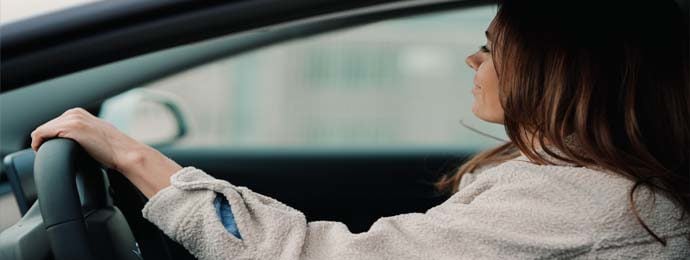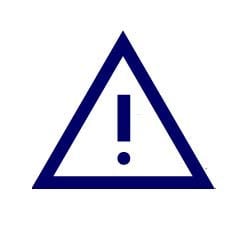Lease car etiquette
When you take out a car lease agreement, you must take good care of it and keep it in the best possible condition to avoid any end-of-lease penalty penalties when you return it.

Nationwide Vehicle Contracts has put together a guide to assist you in better understanding your responsibilities on how to care for your leased car and make the most out of your lease agreement.
Servicing your lease vehicle
To keep your lease car in the best possible condition, you must service it regularly as advised by the manufacturer. A car service is required as part of your lease agreement and is essential to the manufacturer's warranty. Keeping your car in good condition with regular servicing means you will be less likely to incur excessive garage charges or fair wear and tear costs.
A full car service is highly recommended every 12,000 miles or 12 months. When your lease car goes in for a service, it gets a complete check-over to ensure that any mechanical elements that are worn or faulty or that can affect the car's performance, safety, or efficiency are repaired or replaced.
Servicing your lease vehicle helps ensure that essential checks are carried out on the vehicle's safety and provides peace of mind that the car is in a road-worthy condition when you drive it. However, even if you have a maintenance package, it is still your responsibility to make the necessary arrangements to have the vehicle serviced.
It is recommended that you go to a local main dealer to have your vehicle serviced. But, if you prefer to have your vehicle serviced at a local garage, the garage must be VAT registered and use genuine manufacturer parts for any repairs.
Please note that some finance providers, such as Audi Finance and Mercedes-Benz Finance, require that the vehicle be serviced at an authorised dealership. Therefore, you must check your finance documentation before booking your car for a service to ensure you follow the correct guidelines.
Read our Servicing Your Lease Car guide to find out what is involved in an annual car service, the recommended service intervals for your lease car, and whether you have to take it to a main dealership.
“Lease car rules may seem restrictive but remember that you don't own the vehicle. You should maintain your lease car as you would any other rented item and return it in good condition at the end.”

When should you MOT your lease vehicle?
Every vehicle three years old or over must have a current MOT test certificate, and you must renew this once a year. If you own a car, you must have it inspected at least once a year. You can find out when your current MOT expires by checking your vehicle's MOT status on the GOV.UK website or looking at your MOT test certificate.
If you're leasing your car for three years or less, you won't need to worry about getting an MOT for your lease car. However, if you're leasing for longer than three years, it will be your responsibility to ensure your vehicle is covered annually by a valid MOT after its third year.
When taking out a lease agreement for a fixed monthly fee, you can include a vehicle maintenance contract that provides MOT, scheduling servicing, replacement tyres, and other repair costs required during the contract term. If you don't have a maintenance contract, you'll have to cover the costs of the MOT.
Cleaning your lease vehicle
It is recommended that you clean the exterior of your vehicle every few weeks. Cleaning the vehicle's exterior regularly keeps it looking great and helps avoid minor damage. Dirt left unwashed can cause your car to scratch, paint to fall off or lead to rust forming on the vehicle, and wear the protective coat off, which can cause the colour to fade over time.
Polishing the car's exterior four times a year will also help reduce the impacts of stone chips, remove traffic grime, limit the effects of airborne contamination such as bird faeces, and make ordinary washing easier.
Check out our Top Tips to Care for your Lease Vehicle guide for our top tips and advice for maintaining your lease vehicle.
Engine management and dashboard lights
When you start your car's ignition, you may notice that some or all of your dashboard indicator lights will illuminate. This is normal, but if one light remains on longer than the others, it's time to look into it.
There are three different warning lights on all cars: red, amber and green. Red warning lights indicate that you should pull over as soon as it is safe to do so. Yellow warning lights means action is required. Green warning lights are just for information.
Take the time to learn what each light on your dashboard means and how to respond to each one, so you're not caught off guard if one comes on while driving. You should frequently pay attention to any messages and/or lights on your dashboard because they usually signal a car problem. Below are five car dashboard warning lights you cannot ignore.
Common dashboard lights and what they mean

Oil Pressure Warning Light
What It Means: This symbol indicates an issue with your car's oil pressure system. The light will turn on if the oil pressure goes below the threshold. Oil pressure difficulties can occur when there is engine sludge, the oil is unclean or polluted, or an oil pump or filter is damaged. Poor engine lubrication can lead to severe engine damage, so pay attention to this warning. As soon as it is safe to do so, pull over, turn off the car, and check the oil. Look for visible oil leaks in the engine bay, then pull out the oil dipstick to check the fluid level.
What To Do: If the oil level is low, the light will go off when adding oil. However, if there is enough oil, but the engine is noisy, the oil pump could be a problem. On the other hand, if the oil level is okay and the engine is running normally, your oil pressure sensor may be faulty. You should take your vehicle to a garage as soon as possible to have a mechanic look at it and figure out what's causing the low oil/low oil pressure.

Engine Temperature Warning Light
What It Means: This symbol means that your engine is overheating, and the temperature has increased past the recommended degree. Sometimes this warning light might illuminate If the engine temperature sensor is damaged or not transmitting reliable data to the ECU. This is most likely due to your coolant (also called antifreeze).
What To Do: An overheating engine can cause severe damage to your car, so you should pull over as soon as it is safe to do so and turn off the vehicle. It's a good idea to contact a roadside assistance agency to have your coolant topped off or tow your car to a nearby repair shop.

Battery Charging Warning Light
What It Means: This light indicates a problem with a car battery, possibly a damaged cable, a bad alternator, or another electrical fault. You may notice your headlights dimming, or in some cases, your car may not start at all.
What To Do: You should drive home without turning off the vehicle when this light comes on. If your car's battery is low, it's likely that it won't start again until the problem is fixed. When you get home, contact a qualified mechanic to perform a warning light inspection, which will allow them to identify the source of the problem.

Brake Warning Light
What It Means: This symbol or the word "BRAKE" on the dashboard either means the parking brake has been left on or there's a problem with your braking system.
What To Do: First, check to see if your parking brake is on. If the light is still showing even when the parking brake is off, contact a qualified mechanic and have them complete a brake warning light examination before driving further.

Engine Warning Light
What It Means: The check engine light may appear for various reasons. For example, it can be triggered when the ECU detects an electrical or mechanical fault noticed by one of the sensors that monitor the engine, transmission and safety systems. It can also be triggered by a faulty sensor or a loose or cracked gas cap, which causes fuel to evaporate.
What To Do: You should take the check engine light seriously whenever it comes on. Contact a qualified mechanic to have them complete a check engine light inspection to establish why the light is on and what repairs are required to fix it. You should not drive the car until the problem has been resolved.
Vehicle damage: Scrapes, scuffs, chips and cracks
Damage such as scrapes, scuffs, chips and cracks should be repaired as soon as possible after it occurs. This is vital as when the paintwork is damaged it can cause corrosion to the vehicle. You should check with your lease provider, although most will allow you to arrange to have any minor damage repaired and missing or damaged items to be replaced before returning the car. You must ensure that the work is completed to a professional standard by a qualified repairer, and they provide a transferable warranty for the work.
Damage on the windscreens such as Chips, cracks and holes should not obstruct the driver's line of sight. However, if the windscreen does not meet current MOT requirements, it must be replaced if you want to avoid being charged for the replacement. If the windscreen is fixed or replaced, it must be recalibrated according to the car manufacturer's specifications to ensure that any advanced driver assistance systems (ADAS) on the vehicle are fully functional.
If you have a maintenance contract as part of your lease agreement, it is critical that you communicate with your finance provider first so that they can advise you and authorise any repairs that may be necessary.
Check your tyres regularly
It's crucial to regularly check your vehicle's tyres to ensure they are of a safe and legal standard. If your tyres are in poor condition, they could blow out or lose traction in poor weather. Tyre pressure and Tread depth are two checks you should frequently carry out.
Tyres over or under pressure wear out unevenly and need replacing sooner, which can be expensive. Check the manufacturer's suggested PSI before checking your vehicle's tyre pressure to guarantee that no tyre is under or over-inflated. This information is typically found in your owner's manual or online.
Checking the tyre tread of your lease vehicle is vital as having worn tyres means you have less control of your tyres on the road, which can cause a severe accident. Having the incorrect tyre depth can also put you at risk of getting a hefty fine. The legal tyre tread depth for cars in the UK and Europe is 1.6mm across the middle three-quarters of the tyre. The tyre's tread must also meet this minimum requirement across its whole circumference.
Read our Tyre Type and Classification guide for information on tyre size, EU labels and typical seasonal and regional tread variations.
Look after the interior of your lease car
Looking after the interior of a car is a general courtesy when returning a vehicle, but it is a must in the case of leasing a car for such a long time. It's important to remember that even though you've been driving the vehicle for a long time, it doesn't belong to you, and you must return it unless you want to buy it from them.
When it comes to returning your lease vehicle at the end of its contract, there shouldn't be any stand-out stains or odours inside the car, and all materials must be free of tears, burns or rips.
Can you smoke in a lease car?
There is no rule prohibiting you from smoking in your personal lease vehicle, but there is plenty of information on why you shouldn't. Here are a few reasons:
Under fair wear and tear guides, there is a section about unacceptable interior standards upon return. Long-term exposure to cigarette smoke can cause the interior to deteriorate, and cigarette burns can damage the upholstery, which will need to be repaired, or you could be fined.
Second, smoking is prohibited in any vehicle, leased or not, when someone under 18 is present.
If you are business car leasing and leasing a commercial vehicle, smoking is prohibited during its use. This is due to the Smoke-free (Premises and Enforcement) Regulations 2006, which states it is forbidden to smoke in a vehicle that others may use. This is Government enforcement instead of something the finance companies enforce.
Can you vape in a lease car?
Vaping in a leased car is allowed, however, it can still get you in trouble with the law if it is determined to distract you from driving. The vapour produced by the devices is far more visible and denser than cigarette smoke, which can temporarily obscure the road view. The vape device itself can also be a distraction similar to other devices like mobile phones.
Regardless of who is vaping in the car, if a police officer believes the driver can't see the road clearly or is likely to be distracted, they could be fined and earn drivers up to nine penalty points on their licences.
For more information and tips on taking care of your lease vehicle, check out our comprehensive motoring guides or call Nationwide Vehicle Contracts on 0345 811 9595 for expert advice.
Guide Information
Originally published: 9th August 2022
